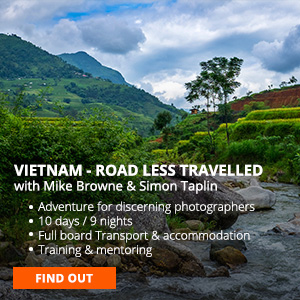Composition Disrupting Symmetry
Composition is in the eye of the beholder. Symmetry in a composition looks stunning with geometric shapes and lines. But how about breaking or disrupting symmetry? What one person loves another will hate.
We had a disruptive image on my Zurich Masterclass in 2015, which completely split the group. Not only was the symmetry of composition disrupted, so was everyone on the workshop.
Folks either loved it or hated it. No one was ambivalent about it. And guess who took it? Yep, me. I was a disruptive influence in school and I guess I still am at times in photography too.
Sometimes when we shoot an image we have a clear pre-visualisation of what we want to achieve in camera. I did when I shot this one. I knew I’d have to remove the disruptive element in Photoshop and would end up with a nice symmetrical image.
But, on seeing it on screen I completely changed my mind. Suddenly the things that bugged me about the composition when I captured it had flipped 180 degrees. I loved them and as far as I’m concerned, the disrupted symmetry is what makes it interesting.
There is no right or wrong composition, there’s only what works for the person who’s taking the picture. When you’re learning photography, this is a very difficult concept for a new photographer to grasp. We want rules to follow. But creative photography doesn’t work like that.
Sure we have the basic ‘rules’ of composition like thirds, diagonals, leading lines etc. to help people get started. And they mostly work well. But as you grow and learn you don’t have to please anyone except yourself, you’ll get brave and find yourself starting to break the rules on purpose. Which is what I did with this composition. Loads of beautiful symmetry, completely disrupted with a couple of twigs.
When I went to film this video, my intention was to concentrate on the composition element only. But the light wasn’t great and the exposure very tricky. It was an exposure that had to be properly though through or the highlights would be burnt out and too bright and shadows blacked out.
In lighting situations like these I always use my histogram to ensure I’m capturing maximum data in the RAW file. Which cam be brought to life in Lightroom later.
Our eyes don’t see light the same way a camera does, so you have to pay attention to what’s going on when making an exposure such as this. Eyes cannot be trusted, but histograms never lie.
So you have to use your 7 Building Blocks of Photography. Ask yourself powerful questions as you assemble them in the correct order to achieve the image you want. If you know me by now, you’ll know I’m big on thinking like a photographer because no matter how expensive your camera is. It needs you.











































